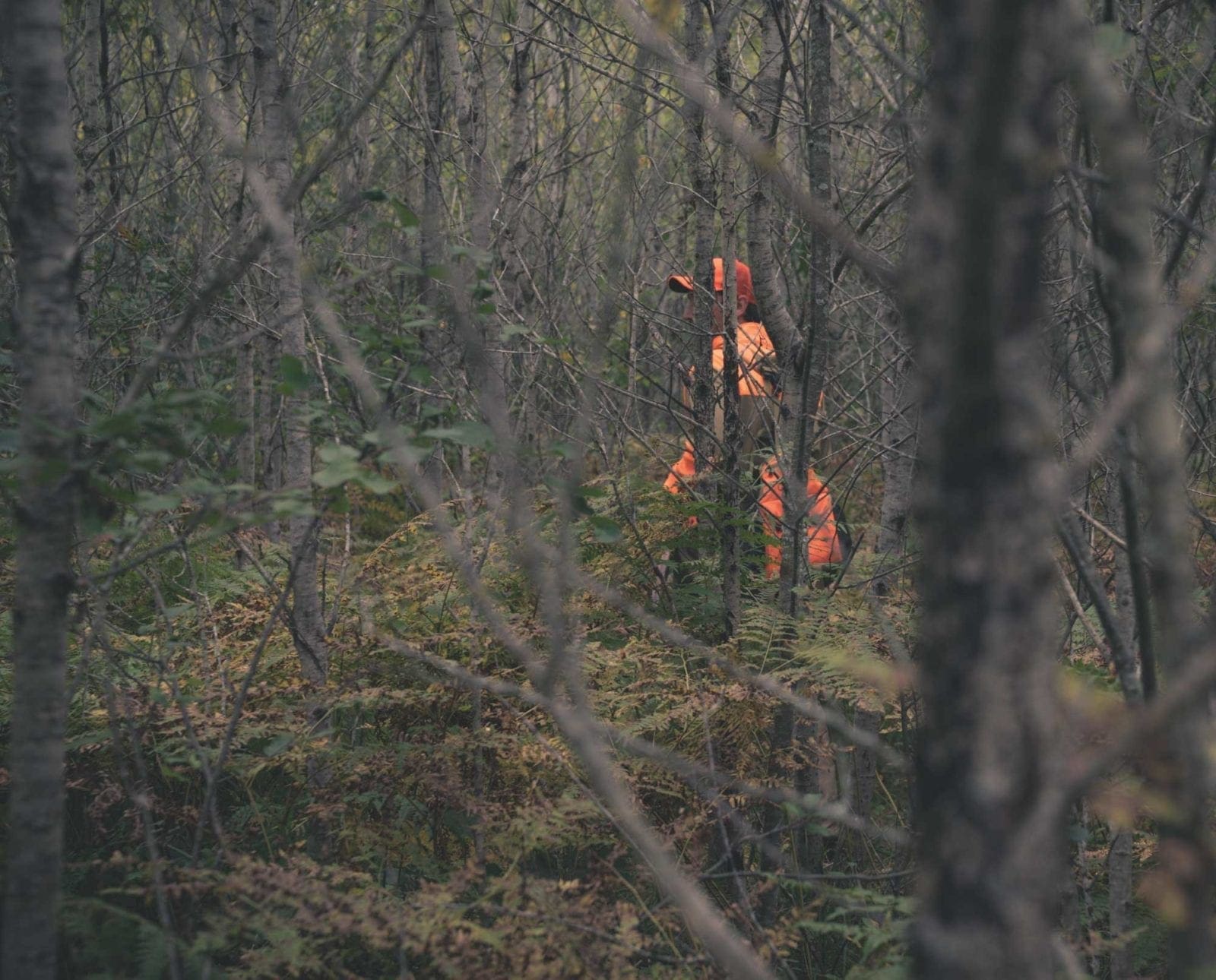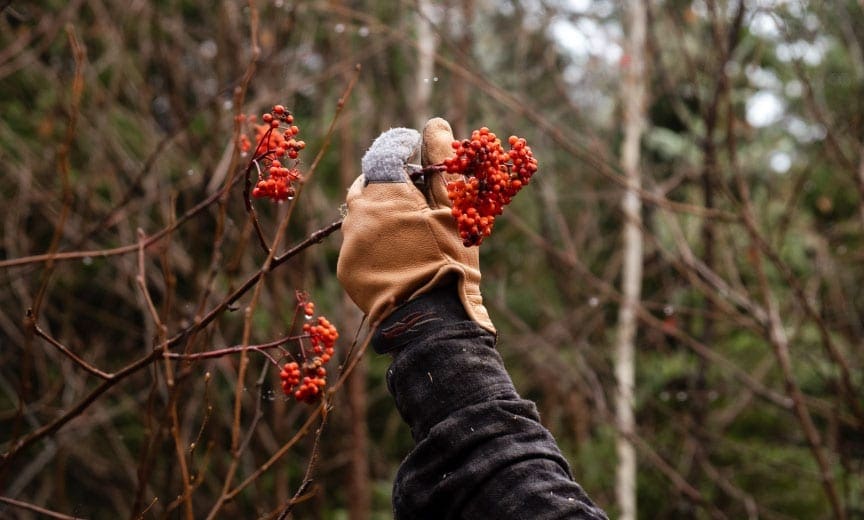Home » Grouse Species » Ruffed Grouse Hunting » How to Identify Ruffed Grouse Habitat
How to Identify Ruffed Grouse Habitat

Ryan Lisson is a biologist and regular content contributor to…
Where to Find Ruffed Grouse Habitat Throughout the Country
If you’re going to be a successful Ruffed Grouse hunter, you need to learn where the birds are hiding. Distance walked does not always equal success. Putting in ten miles a day might sound impressive, but it doesn’t mean a thing if you’re not focusing on the right Ruffed Grouse habitat. You could walk only a fraction of that distance in the right areas and end the day with a heavier vest and a home-cooked wild game meal.
Interested?
In this guide, we’ll take you through the basic habitat requirements of the ruffed grouse across its range so can have a general idea of what to look for in a healthy forest. We’ll get more specific by breaking it down into regional differences in order for you to really narrow down some hunting spots near you.
General Ruffed Grouse Habitat
Since ruffed grouse can and do survive across Canada, the northern half of our country, and even down into Georgia along the Appalachian Mountains, the habitats vary greatly. But while the exact plant species are different, the same basic concept applies: thick cover. If you can find densely growing trees and young forest habitats, there’s a good chance you’ll find grouse there.
The age of a forest may be just as important (if not more important) than the exact species present. Forests cut within the last 20 years or so seem to offer the right mix of species and density of cover. Dense thickets and forests are used by hens to rear their chicks—the really thick cover helps hide them from aerial and ground predators until they can fly better to evade them. Adults tend to spend more time in mature forests, foraging in the understory. But they still seek thick cover for security and food, too. Additionally, small openings and trail networks can benefit grouse because they usually offer green plants (e.g., clover, strawberry, etc.) and plentiful insects for younger birds.
A good way to find ruffed grouse in the fall is to walk along transition areas between habitat types. Places like mature forest and young forest, swamp and mature forest, old fields and young forest. Anywhere there’s a change in the cover type, there’s going to be a more diverse mix of tree/shrub species and one is bound to be thicker than the other. That’s a recipe for finding grouse.
Many hunters use programs like Google Maps to find Ruffed Grouse Habitat.
Regional Ruffed Grouse Habitat Preferences
Now we’ll discuss the specific ruffed grouse habitat types in several different regions across the country.
Midwest Ruffed Grouse Habitat
The Midwest is usually regarded as the best place in the country to hunt ruffed grouse. Minnesota, Wisconsin, and Michigan have millions of acres of prime grouse habitat available, and much of it is publicly accessible. These states also manage their forests well, which means they protect young forest habitats.
In the Great Lakes states, quaking aspen-white birch forests are undeniably the best and most productive habitat for grouse. These forest types provide lots of dense cover within one year of cutting them and continue to do so for decades. The buds/catkins from both species are consumed by grouse heavily throughout the winter. When fully mature, the understories are open enough to provide lots of shrub species that grouse forage on (gray dogwood, winterberry, hazel, mountain ash, serviceberry, and others). These forests are usually closely bordered or interspersed with mixed conifer-hardwoods, spruce-fir forests, and speckled alder swamps, all of which offer additional food and cover. Conifers are especially important in the winter, as grouse can hide beneath their boughs when winter snow depths are insufficient for snow burrows.

In the southeast portion of the Midwest, mixed oak woodlands and oak-hickory forests are usually best for ruffed grouse. While they won’t generally be as productive as the aspen-birch forests, they can produce good populations, especially if there are mixed conifers and other hardwoods.
Northeast Ruffed Grouse Habitat
The northeast region of our country is hit-or-miss with grouse. In some areas, their habitat has completely disappeared due to development and urbanization. But there are still pockets of grouse cover scattered here and there. The further north and west you go, the more grouse habitat you’ll find.
On the north end of its range (i.e., Maine), plentiful northern hardwood forests and mixed conifers offer similar habitat as that of the Midwest. There’s great partridge hunting to be had here. Further south, deciduous forests (especially maple, black cherry, or beech) that are managed periodically offer a good variety of species and structure for grouse. In the northern Appalachian Mountains, deciduous forests with an understory of rhododendron, mountain laurel, serviceberry, and greenbrier are productive habitats both in higher elevations and along riparian channels. Grouse will occupy old farmsteads in the New England area. These farmsteads generally have apple orchards and wild crabapple trees that have been overgrown with brambles and blackberry, all of which offer food and cover.
Southeast Ruffed Grouse Habitat
Ruffed grouse populations are limited in the southeast U.S., as they require snow for a portion of the year. As such, they generally only occur in higher elevations of the Appalachian Mountain range down into Georgia. Most of these areas consist of national forests that aren’t managed for young forest. Yet you can still find good grouse hunting there.
Mixed oak-pine forests and eastern red cedar-hardwood forests are important habitats in this region. Mature oak trees provide mast and the pines and cedars provide cover. It will be even better if there’s an understory of rhododendron, mountain laurel, or soft mast species (wild grape, greenbrier, hawthorn, and blackberries). Whether public or private, sloped or flat, try to find areas that have been cut within the last decade. The thick regrowth will be one of the best spots to find grouse in this region.
Northwest Ruffed Grouse Habitat
The Pacific Northwest has several very different habitats for grouse. Towards the coast, the climate and vegetation of the temperate rainforest are very different from the dry mountains of Idaho or the high forests and grasslands of Montana. But there are ruffed grouse to be had if you know where to look.
Washington and Oregon grouse are more likely to be found along riparian stream channels or wetlands where the dominant species include red alder, western hemlock, cedar, and other understory forage species. If one of these riparian areas borders a fruit orchard, all the better. In Montana, cottonwood-quaking aspen woodlands, stream channels, and ponderosa pine woodlands offer the best habitat for ruffed grouse. In Idaho, riparian areas and mixed conifers like Douglas fir, lodgepole pine, ponderosa pine, and quaking aspen woodlands are the most productive. With all of these habitats, try to find forests that have been managed in the recent past for the best chance of finding birds.
As you can see, you’re probably not all that far from decent grouse hunting no matter where you live. Use these habitats as a general guide, but don’t be afraid to try finding new coverts elsewhere. You never know where these resourceful birds will flush from.
Other Relevant Article: Winter Habitat for Ruffed Grouse
“There are few bird species that are known to take winter in a good way. This is the reason so many birds are migratory, whether song birds, waterfowl, or our beloved American Woodcock. Even the iconic Eastern wild turkey is not well equipped to handle all the elements of the north country. Deep snow can prove to be a real hazard to turkey’s, whether food is present or not. The ruffed grouse, however, is an enigma in the world of birds when it comes to winter survival.” – Read the Full Article: Ruffed Grouse in the Winter Time
Sources:
Ruffed Grouse Society. 2017. Grouse Facts. Accessed at: http://www.ruffedgrousesociety.org/grouse-facts#.WXz3TYTyupo
NatureServe. 2017. NatureServe Explorer: An online encyclopedia of life. Accessed at: http://explorer.natureserve.org
Meyer, Rachelle. 2011. Bonasa umbellus. In: Fire Effects Information System, . U.S. Department of Agriculture, Forest Service, Rocky Mountain Research Station, Fire Sciences Laboratory (Producer).
Ryan Lisson is a biologist and regular content contributor to several outdoor manufacturers, hunting shows, publications, and blogs. He is an avid small game, turkey, and whitetail hunter from northern Minnesota and loves managing habitat almost as much as hunting. Ryan is also passionate about helping other adults experience the outdoors for their first time, which spurred him to launch Zero to Hunt, a website devoted to mentoring new hunters.



